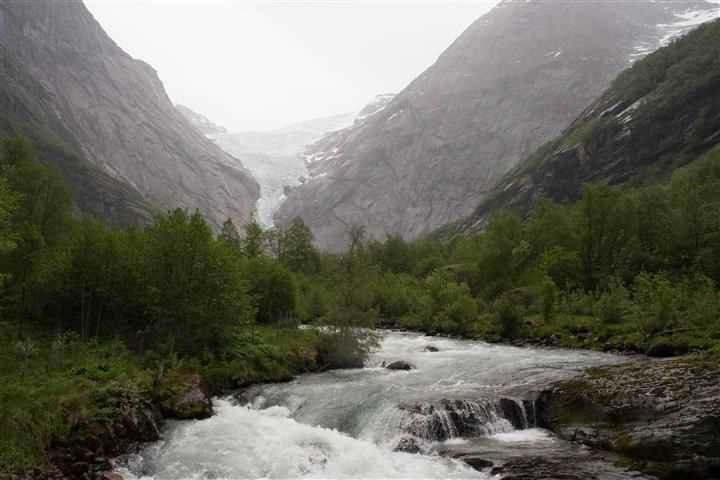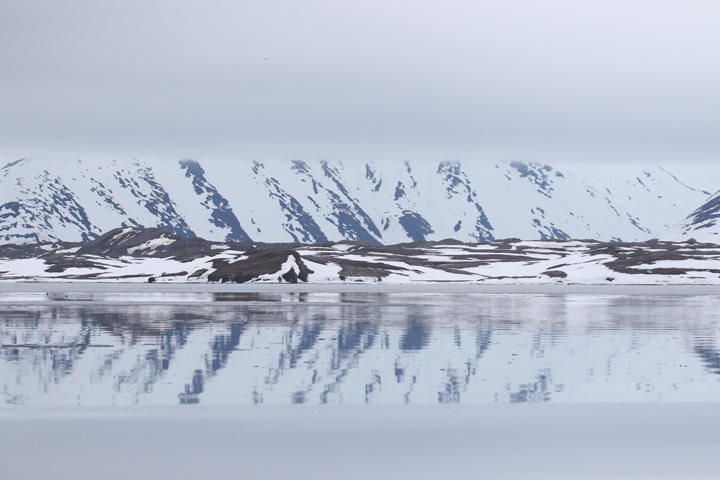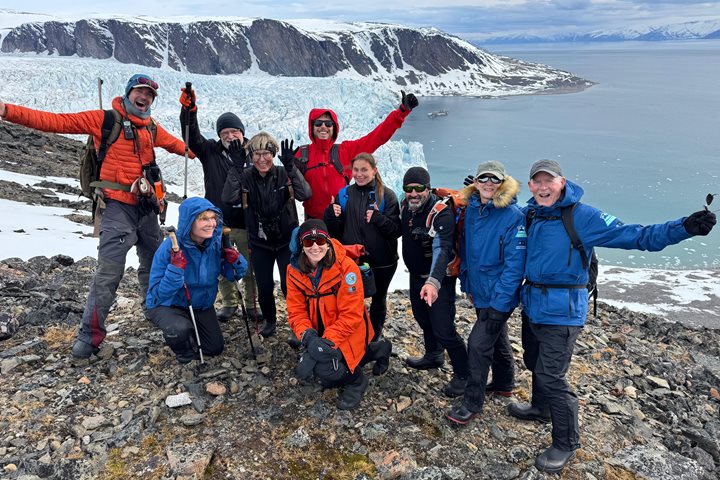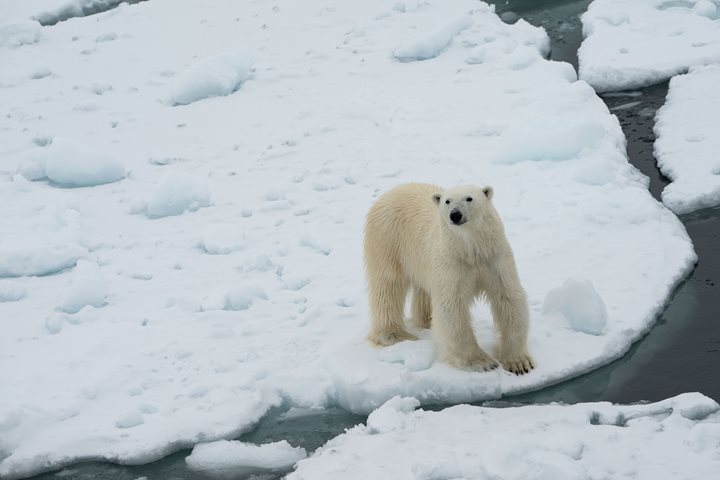The west coast of Norway is a maze of fjords and mountain ranges carved by the action of ice over many thousands of years. These violent geological processes have created one of Earth’s most spectacular landscapes. The complex fjord system is a combination of calm, seemingly unending, waterways framed by steep, snowy mountains, rocky cliffs, and conifers that make the scenery strikingly beautiful. One of the largest fjords in this system, at 106 kilometers (66 miles), is Nordfjord.
National Geographic Explorer arrived in Nordfjord in the early morning. After disembarking, some of us took a tour of Lake Lovatnet aboard MS Kjendal. We stopped to enjoy fresh waffles and coffee before walking to the viewpoint for the Kjenndal glacier. Those who chose to visit the Briksdal Glacier took a scenic trail through a valley surrounded by waterfalls and lush Norwegian forest.
Briksdal and Kjenndal are two of the 50 arms of Jostedal Glacier, the largest glacier on the European mainland. Although it’s exceptional in scale, the glacier is retreating rapidly due to rising global temperatures. Signs of the arms receding, an indicator of this rapid decay, were clearly visible.
Upon returning to Loen, we took the Loen Skylift that climbs 990 meters to the top of the mountain, where we enjoyed a breathtaking view over Nordfjord and National Geographic Explorer anchored in the bay. In the afternoon, as we made our way out of the fjord, the crew took the ship close to a magnificent waterfall before we sailed onward, gradually making our way out toward our next destination.









